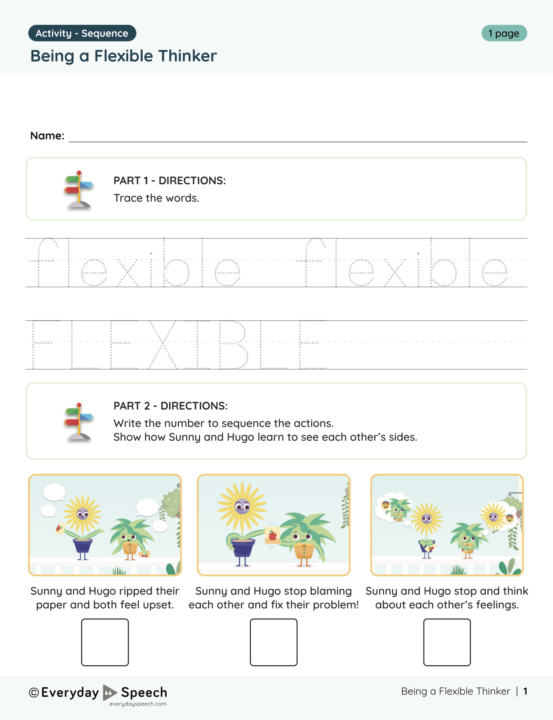
Young minds are impressionable, playful, and inherently curious. One critical skill for these budding intellects is flexible thinking. Flexible thinkers can adapt to new situations, approach problems from different angles, and cope better with life’s unpredictabilities. As a preschool teacher, it’s a joy and a duty to instill such qualities in children. If you’re searching for the perfect activity, you’ll love our “Flexible Thinking Worksheet for Preschoolers.”
Why Teach Flexible Thinking to Preschoolers?
Preschool is a period of rapid brain development. It’s a time when children are forming the foundational cognitive, emotional, and social skills they’ll use for the rest of their lives. Flexible thinking helps preschoolers:
- Embrace diversity of thought and action.
- Navigate challenges with creativity.
- Develop resilience against setbacks.
The Power of Tracing & Story Sequencing
Tracing activities hone motor skills and attention to detail. Sequencing, on the other hand, promotes logical thinking and pattern recognition. Together, they form a potent combination for teaching flexibility.
Lesson Plan: Introducing Flexible Thinking to Preschoolers
Duration: 20 minutes
Materials Needed: Printed copies of the “Flexible Thinking Worksheet for Preschoolers.”
Introduction (5 minutes)
- Story Time: Begin with a simple story of Sunny and Hugo, the plant characters, facing a situation where they had to think differently to solve a problem. This sets the stage for flexible thinking.
Activity: Tracing & Sequencing (10 minutes)
- Distribute Worksheets: Hand out the “Flexible Thinking Worksheet for Preschoolers.”
- Tracing Activity: Guide the children to trace the word “Flexible.” Discuss how the lines are sometimes straight, sometimes curvy, symbolizing adaptability.
- Sequencing with Sunny and Hugo: Present the three images of Sunny and Hugo. Have students sequence the images correctly. Support students when needed.

Debrief and Reflection (5 minutes)
- What We Learned: Discuss the growth of Sunny and Hugo and how it’s similar to the growth of our thinking. Just like Sunny and Hugo had to grow and change, our thinking can too.
Key Takeaways
- Flexible thinking is crucial for development and helps in various life scenarios.
- Activities that involve tracing and sequencing are not just fun, but they also instill important skills in preschoolers.
As preschool educators, cultivating flexible thinkers is among our noblest pursuits. By integrating tools like the “Flexible Thinking Worksheet for Preschoolers” and adopting an interactive, hands-on approach, we’re shaping minds that will thrive in tomorrow’s dynamic world.
Sample Video
Students learn best from watching real students their own age model skills. Try out this sample video-modeling lesson below. We offer our entire Social-Emotional Learning platform free for 30 days here!
Related Blog Posts:
Teaching Flexibility: A Guide for Educators
Teaching Flexibility to PreK Students: Handling Changes in Plans
Enhancing Learning Through Cognitive Flexibility: Insights for IEP Goal Planning









